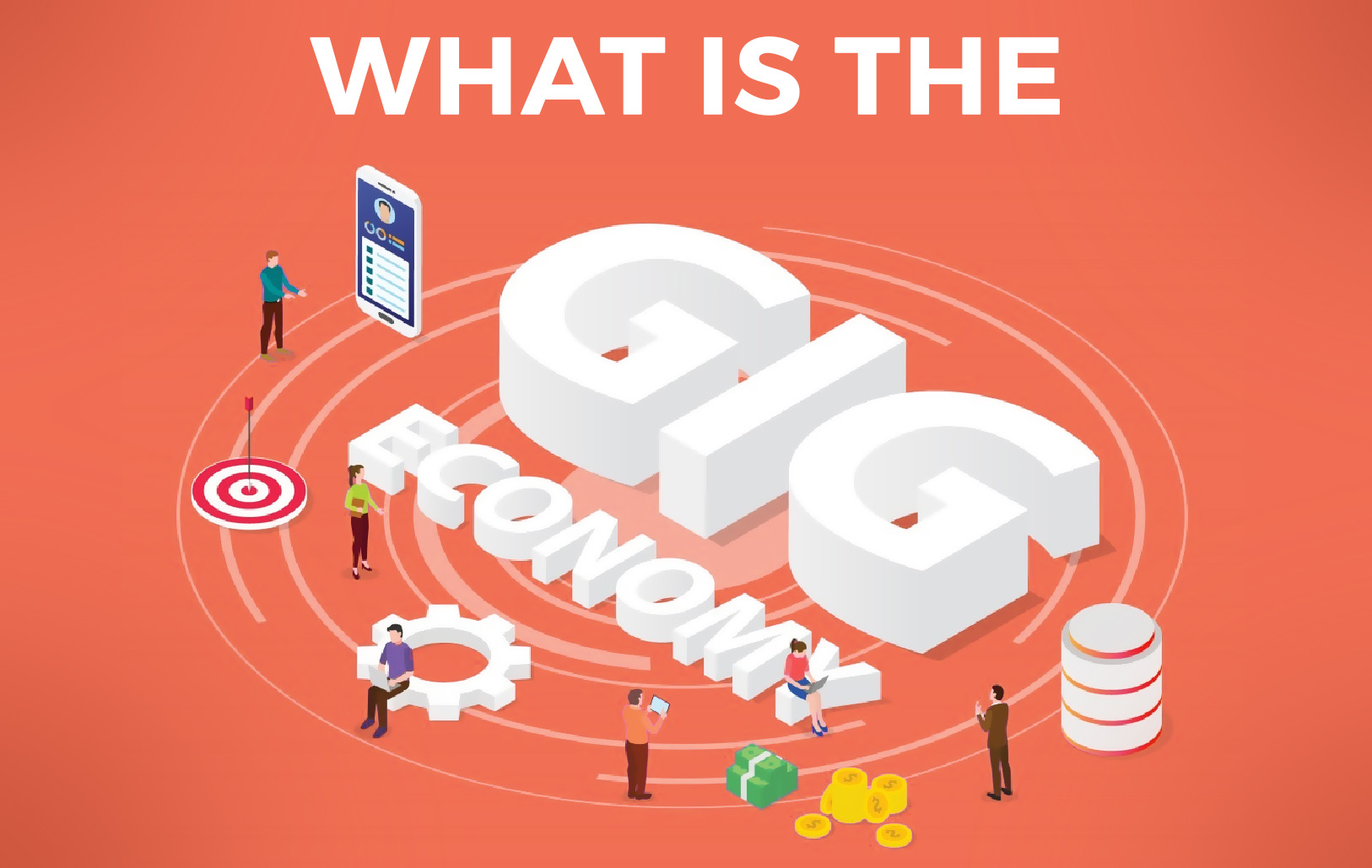The gig economy has become a prominent feature of the modern work landscape, reshaping how work is defined, accessed, and performed globally. This emerging trend represents a fundamental shift from traditional 9-to-5 jobs to a more flexible and freelance-based market. Understanding the gig economy’s benefits, challenges, and future implications is crucial for workers and companies navigating this evolving sector.
What is the gig economy?

A: The gig economy refers to a labor market characterized by the prevalence of short-term contracts or freelance work, as opposed to permanent jobs. In this economy, individuals are paid for the “gigs” they perform, such as a food delivery or a graphic design project, rather than receiving a regular salary. The gig economy is driven by the flexibility that it offers to both workers—who can choose when, where, and how much to work—and employers—who can hire workers on an as-needed basis without the overhead costs of permanent employees. Overall, the gig economy is reshaping traditional employment models and presenting both opportunities and challenges for workers, employers, and policymakers.
The Rise of the Gig Economy
The gig economy encompasses a labour market characterized by the prevalence of short-term contracts or freelance work as opposed to permanent jobs. It’s a system where organizations and independent workers engage in temporary, flexible job assignments. Often mediated through digital platforms, these gigs range from ride-sharing and delivery services to specialized tasks like graphic design, programming, or consulting services.
Defining Characteristics
Flexibility and Autonomy: One of the hallmark features of the gig economy is the flexibility it offers. Workers can choose when, where, and how much they work, often balancing multiple gigs simultaneously.
- Digital Platform Mediation: Technology plays a central role, with apps and websites as intermediaries connecting freelancers with clients or customers.
- Diverse Opportunities: The gig economy spans numerous industries and sectors, offering a wide range of work, from manual tasks to highly skilled professional services.
- Short-term Engagements: Unlike traditional employment, gig work consists of fixed-term projects or tasks with a clear endpoint.
Growth Drivers
Several factors have contributed to the rise of the gig economy:
- Technological advancements: Improved internet access and mobile technology have facilitated the connection between gig workers and clients.
- Economic shifts: Economic uncertainty and the 2008 financial crisis drove many towards freelancing to supplement income.
- Changing work preferences: Particularly among millennials and Gen Z, there is a growing desire for work that offers greater independence and work-life balance.
Examples of the Gig Economy

The gig economy encompasses a wide range of jobs and industries. For example, rideshare drivers for companies like Uber and Lyft are quintessential examples of gig work, as they choose when and where to drive and for how long. Freelancers who find short-term writing or graphic design projects through platforms like Upwork or Fiverr also illustrate the diversity within the gig economy. Additionally, individuals offering accommodation through Airbnb, delivering food with DoorDash, or providing professional services like consulting or legal advice on a per-project basis all participate in the gig economy, leveraging their skills and assets to meet the demand for flexible, temporary services. It is safe to say that the gig economy has a broad reach and encompasses various industries and job roles. As technology advances and work preferences evolve, we expect further growth and diversification in the gig economy. The possibilities are endless as we enter a new era of work with limitless potential for both individuals and businesses. Let’s embrace this change and navigate the gig economy together. So, here’s to a future of work that offers flexibility, opportunity, and autonomy.
Navigating the Gig Economy: Benefits and Drawbacks
Benefits
The gig economy offers workers unparalleled flexibility and autonomy, enabling them to work on their terms. It provides opportunities for those who may be excluded from the traditional job market, such as students, caretakers, or individuals with disabilities. Additionally, it serves as a platform for skill development and diversification.
From employers’ perspective, the gig economy allows access to a global talent pool with reduced overhead costs. It facilitates scalability and agility, enabling companies to adjust their workforce based on fluctuating demands.
Drawbacks
However, the gig economy also presents several challenges. The lack of job security, unpredictable income, and absence of employment benefits such as health insurance, pensions, and paid leave pose significant risks for workers. There’s also the issue of increased competition and the pressure to seek new gigs constantly.
Employers need help maintaining quality control and building a reliable workforce. The transient nature of gig work can lead to a lack of commitment and investment in company culture or long-term goals.
The Future of Work: Predictions and Possibilities

As we move forward, the gig economy is expected to continue growing, driven by technological advancements and evolving work preferences. We may see increased regulation to protect gig workers, including efforts to provide benefits and establish fair labour standards.
Moreover, the gig economy could lead to the emergence of new job roles and the transformation of industries. Companies might adopt flexible staffing models, integrating gig workers into strategic planning.
Frequently Asked Questions (FAQs)
Q: How big is the gig economy?
A: Estimating the size of the gig economy can be challenging due to its dynamic nature and the varying definitions of gig work. However, reports suggest that millions worldwide are engaged in gig work, with the number expected to rise.
Q: Can you build a career in the gig economy?
A: Yes, many individuals have successfully built careers within the gig economy, particularly in fields like design, writing, programming, and marketing. Success often depends on networking, skill development, and sound financial planning.
Q: Are gig economy workers considered employees?
A: Most gig economy workers are classified as independent contractors, not employees. This distinction can affect their legal rights and benefits.
Q: How do taxes work in the gig economy?
A: Gig workers, as independent contractors, are responsible for managing their taxes, including paying self-employment tax and making quarterly estimated tax payments.
Q: Will the gig economy replace traditional jobs?
A: While the gig economy is expanding, it’s unlikely to replace traditional employment completely. Many industries and roles still require a stable, long-term workforce. However, the gig economy will likely coexist and integrate with conventional employment models, leading to a more diverse and flexible labour market.
Conclusion
The gig economy is remaking the work landscape, offering opportunities and challenges. It emphasizes independence, flexibility, and the significance of technology in modern employment. As we navigate this new era, balancing the benefits of gig work with the need for security and stability will be crucial. Whether you’re a gig worker, employer, or policymaker, understanding the dynamics of the gig economy is critical to leveraging its potential while mitigating its risks.













